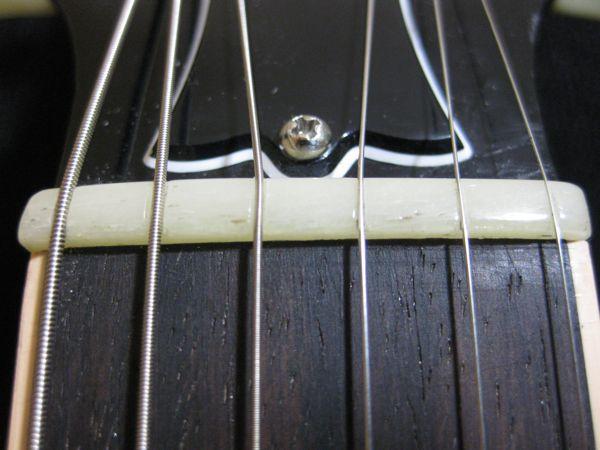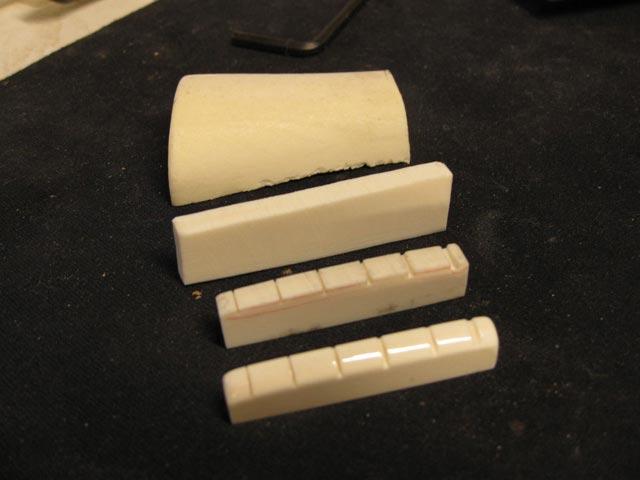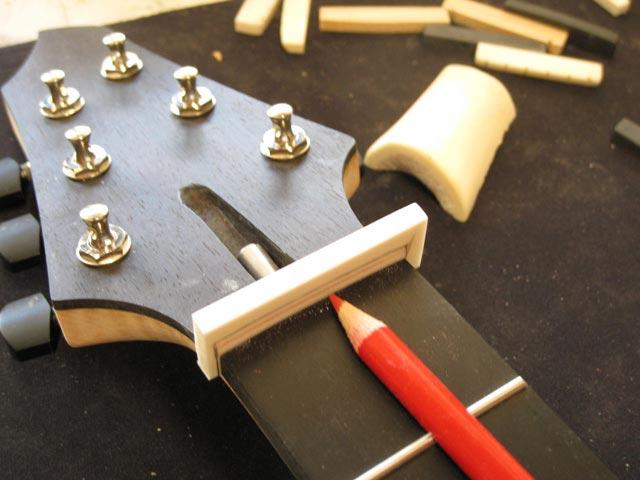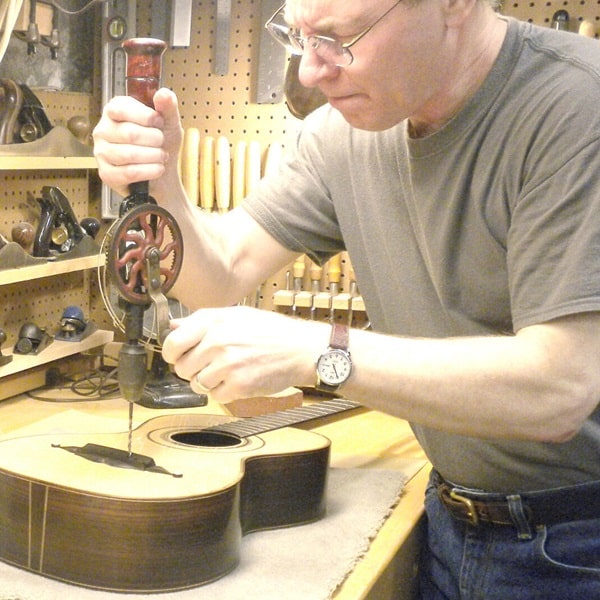Picture this: a seasoned guitarist strumming their strings on stage, crafting a melody that seems to dance through the air. But something transformative is taking shape—an almost imperceptible change in the sound’s clarity and richness. The secret behind this evolution? A simple yet profound component, the bone nut. As a luthier since 1994, I’ve repeatedly witnessed how this often-overlooked piece becomes the lifeline of a guitar’s resonance. The journey to appreciating and understanding the guitar nut starts here, where aesthetics, craftsmanship, and acoustics intersect.
In this guide, we will explore my hands-on experience and knowledge to help you navigate the world of guitar nut manufacturing. We’ll delve into the types of guitar nuts available and discuss why choosing a bone nut can radically enhance your guitar’s performance. Alongside, I’ll guide you through the meticulous process of crafting and maintaining a bone nut while offering tips to keep your instrument in top condition. Intrigued? Let’s unravel the mysteries of this unsung hero of the guitar world. Embrace the journey that transforms sound from the ordinary to the extraordinary.
What is a Bone Guitar Nut?

In my research on instrument acoustics, I’ve discovered that the material of the nut profoundly influences your guitar’s character. As a guitarist, achieving that perfect sound is always a pursuit, and understanding the fundamentals—starting with the nut—is essential. So, what exactly is a bone guitar nut? At its core, a bone nut is the small, often-overlooked component located at the end of the fingerboard, crafted from natural bone. It provides a surface for the strings to rest before reaching the tuners, ultimately impacting the instrument’s tonal quality.
But, what exactly sets a bone nut apart from other nut materials? This question opens a Pandora’s box of acoustic enlightenment. Bone is prized among musicians for its superior resonance and sustain compared to synthetic alternatives like plastic or composite materials. In my experience, the dense, yet tactile nature of bone allows for a clearer transference of vibration from string to neck, enhancing the guitar’s natural tone. Its longevity and ability to withstand string pressure without significant wear make it a favorite for many seasoned players, contributing to a warm, rich sound that synthetic types of guitar nuts often can’t replicate.
Moreover, its organic makeup means that each bone nut is unique, adding a character-infused quality to every note played. This individuality translates into a personalized playing experience, where the nuances of sound are as varied as your musical idiosyncrasies. In essence, choosing a bone nut isn’t just about durability—it’s an investment in the soul of your guitar, allowing it to sing with authenticity.
Why Choose a Bone Nut?

As a seasoned luthier, my hands have traversed the contours of countless guitars, each search for the ideal sound leading me back to a fundamental component: the guitar nut. This tiny yet vital piece governs string tension and spacing, and has a profound impact on tone. Could a simple piece of bone be the key to unlocking the true potential of your guitar’s voice? Time and again, my experiences affirm that bone offers a blend of sustain and warmth that’s hard to match.
Throughout my lutherie career, I’ve explored numerous materials, experimenting with everything from synthetic compounds to exotic woods. Each option brought its own set of characteristics, yet bone consistently stood out due to its ability to enhance guitar tone quality. The resonance and clarity it provides are unparalleled, giving each note a desirable richness and depth. This can be attributed to the density and hardness of bone, allowing for *superior vibration transfer* from the strings to the body of the guitar, resulting in improved sustain and dynamic range.
However, like any material, bone nuts come with both *pros and cons*. On the upside, they are incredibly durable and, once crafted and installed properly, can last for years without losing their tonal qualities. The main drawback tends to be variability; since bone is a natural material, no two pieces are exactly alike, which can lead to inconsistencies if not sourced properly. Still, for those seeking authenticity and a truly organic sound, this slight variability can actually be seen as a unique advantage.
The nut material, whether bone or otherwise, sets the stage for your instrument’s voice. Comparing bone to synthetics, you’ll often find that the latter lacks the nuanced warmth and sustain that bone delivers. In my view, the choice is clear—if you seek the essence of what makes your *guitar sing*, a bone nut may very well be the secret ingredient you’re missing.
Where to Buy or Source Bone Nuts

Finding high-quality bone for guitar nuts can be a challenge—are you sourcing the best materials for your instrument? Over the years, as the editor of the Savart Journal, I’ve observed how the sourcing of materials can make or break your guitar’s quality. If you’re on a quest for the perfect bone nut, knowing where to buy or source one is crucial to enhancing your instrument’s tone and playability.
In the evolving landscape of guitar nut manufacturing, traditional shops that specialize in luthier supplies are often your best bet. They provide a curated selection of bone nuts engineered with precision to meet any guitarist’s customization needs. Local music stores sometimes carry pre-made nuts, but for those seeking a more personalized touch, exploring online platforms is indispensable.
Reputable online retailers like StewMac and Allparts are renowned for their commitment to quality, offering a wide array of options. When browsing these sites, pay attention to customer reviews and product descriptions to ensure the material’s authenticity and suitability for your specific guitar.
Moreover, artisans and small-scale manufacturers on platforms like Etsy offer handcrafted bone nuts that can add a bespoke charm to your instrument. Engaging with these craftsmen not only supports their artistry but also allows you to customize your nut to the finest detail.
Whether you opt for local stores, major online retailers, or indie artisans, the key lies in understanding what you need from a bone nut. This knowledge empowers you to make informed decisions that enhance both the functionality and sonic character of your guitar. Next, we’ll delve into the craft of making your own bone nut, ensuring you have the best tools and insights at your disposal.

R.M. Mottola, an engineer-turned-luthier, revolutionizes stringed instrument design with his deep focus on acoustics and ergonomics since 1994. As editor of the Savart Journal and a key contributor to American Lutherie, Mottola merges science with artistry in lutherie. He enriches the field with his extensive knowledge, shared through his Liutaio Mottola website, making him a beacon in the world of modern instrument craftsmanship.
